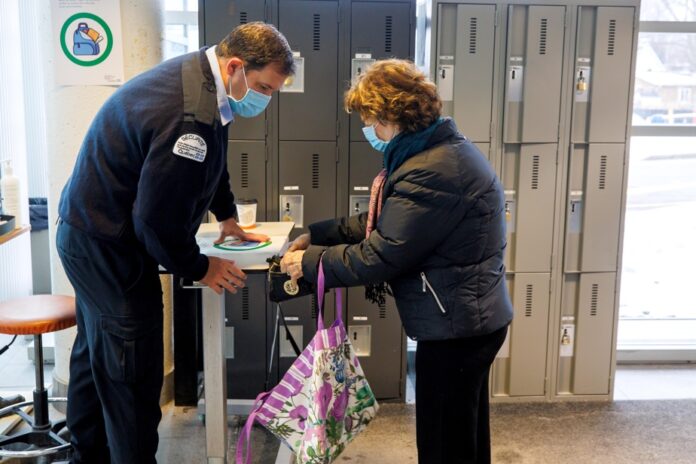With the rise in gun violence, the Sacré-Coeur-de-Montréal hospital faces a new security challenge: patients with gunshot wounds are sometimes admitted with firearms in their possession. All patrons are now required to submit to a bag and coat inspection at the ER entrance.
Specializing in traumatology, the Hôpital du Sacré-Coeur-de-Montréal plays a crucial role in the care of patients with gunshot wounds, which has skyrocketed in recent years. The number of hospitalizations for firearm injuries increased from 10 in 2017-2018 to 27 in 2021-2022.
The hospital’s trauma team is at the heart of the action. Time is running out to save the lives of these young victims who do not always cooperate, as reported by La Presse in an immersive report last spring1. Staff sometimes go so far as to risk their own safety to provide care.
“When treating someone with a [firearm] injury, the chances are greater that the patient and visitors will have guns on them as well,” says Mélanie Charbonneau, Assistant to the Acting Deputy President and CEO at CIUSSS du Nord-de-l’Île-de-Montréal.
Hospital security seized two firearms in October 2021. These weapons were found by chance in the personal effects of a patient upon admission to the hospital. The team also intervened in several events related to users or armed visitors.
Since December, security officers have systematically checked the personal effects of patients and visitors. This pilot project, first implemented at Jean-Talon Hospital for two weeks in the fall, aims to improve the safety of staff, users and visitors to the hospital centre.
Objects that are not safe or prohibited in the hospital, such as Swiss army knives, retractable knives or bottles of alcohol, are placed in lockers. Users then pick them up when they leave.
Last Monday, at the passage of La Presse, many patients flocked to the security workers. Barely entering the emergency, Josefina Hernandez places her bags on the table in front of the security worker, Carl Brabant. “I don’t mind him watching. When you have nothing to hide, there is no problem, “said the lady, who has been coming for a week to visit her husband hospitalized in the emergency room, smiling.
A few minutes later, Mr. Brabant questions a patient, Jean-Yves Simard, about the contents of his pockets. The man pulls out a small penknife. “As a preventive measure, we’re going to have to put him in a locker,” the speaker explains to him. ” No problem. I always carry my Swiss army knife, because there are a lot of tools on it, ”says Mr. Simard.
The pilot project is well received, notes Mr. Brabant. “In general, people collaborate,” he says. In the event that a user does not wish to submit to the visual inspection, the bag and the coat are left in the locker, then collected at the exit.
Mélanie Charbonneau, of the CIUSSS du Nord-de-l’Île-de-Montréal, is aware that it will still take time to adapt.
The rise in gun violence in Greater Montreal “has affected employees’ sense of safety,” Charbonneau said. This feeling of insecurity among staff increases the difficulty of retention and sick leave, according to her.
The implementation of the verification, however, succeeded in reassuring some of them. The sense of security of emergency personnel thus went from an average of 5.25 on a scale of 10 before the implementation of the pilot project to 7.34 after its implementation, revealed a questionnaire completed by about thirty emergency personnel. In addition, more than 80% of employees said they were in favor of maintaining audits.
In February, the CIUSSS submitted requests for funding to the Government of Quebec to be able to maintain the project permanently at the Sacré-Coeur, Fleury and Jean-Talon hospitals. He is still awaiting a response.


















